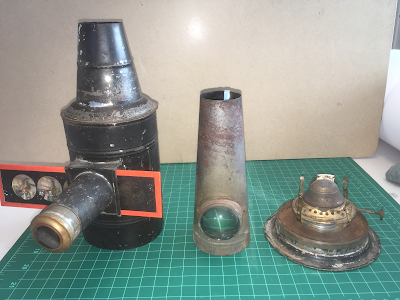And I get to contribute!
It occurred to me that this might make a good "process post" about how I make a comic, keeping in mind that this project is different from how I usually work. I'll point out how as I go.
The Rocketeer is an action-adventure story set in the Art Deco 1930s. Stevens mixed real-life people and places with his tales of barnstorming pilot Cliff Secord, who zips through the sky with a rocket on his back righting wrongs. Cliff is a young, dashing but reluctant hero, perfectly played in the movie by Billy Campbell. I joked about the 1991 Disney movie earlier; CAM told me that we had the Stevens family's blessing but not Disney's, so we could use material from the comics but not the film. Luckily, the film is such a close copy of the comics that almost everything in it showed up in the comics first.
As the guy who wrote two graphic novels called Whatever Happened to the World of Tomorrow? and The Last Mechanical Monster, I thought this was right up my alley.
My first idea was to draw something tall and skinny, so I could show the Rocketeer blasting into the sky. I did this VERY small thumbnail on a sticky note just to check the proportions and composition. That's the only preliminary sketch I did.
 |
| It ain't much, but it did the job. |
I drew on a piece of watercolor paper 1 foot wide and 3 feet tall. I don't have a drawing board that big, but I do have scrap pieces of wood left over from a bookshelf project, so I taped the paper onto that and began penciling, to be followed by inking over the pencil lines.
 |
| Watercolor paper taped to a melamine board, with the border lightly penciled. |
In most of my comics work, I pencil with light "non-photo" blue pencil that readily disappears when it's scanned. That way I don't have to erase and risk dulling or smearing the ink. But since this is meant to be a finished piece of art that someone might want to hang on a wall, I penciled with a regular ol' Number 2 that I would erase once I inked over it.
The little man in the drawing is Cliff's mechanic buddy Peevy. The woman--well, that's a digression. In the comics, Stevens used the real-life pin-up model Bettie Page as the direct inspiration for Cliff's girlfriend, Betty, but that wasn't going to fly in a Disney film for more than one reason. In the movie her name is Jenny and she's played more demurely by Jennifer Connelly. My heroine isn't dressed like Betty, Bettie, or Jenny--I googled "1930s fashion" and picked a pretty dress--but she has Betty/Bettie's trademark bangs and jet-black hair.
After penciling the whole thing, I inked it using a brush and India ink, brush pens, and Micron pens, then gently erased my pencil lines with a soft kneaded eraser.
 |
| Inked. |
I don't like making comics on watercolor paper. In fact, I recently had a bad and time-wasting experience with it. It's just not the right medium for fine ink lines. The standard paper for cartooning is Bristol board, which is like a real nice cardstock. But I went with it on this project because I planned to watercolor the picture, and Bristol board is lousy for watercolors.
After I finished watercoloring, I let it dry a bit and then scanned it so CAM could see what I was burdening them with. Since this is the scan that'll also advertise the eventual auction on eBay, I hardly fiddled with it at all, as I might with something meant for publication. What you see is what you'll get.
 |
| Peevy, Betty (?), and the Bulldog. I don't know why "Tamale" is singular, but it was like that on the actual cafe. Maybe they only had one. |
 |
| Cliff and a wingman. BTW, the airplane is also historically accurate, a whimsical design called a "Gee Bee" that Stevens loved and used in his comic. |
 |
| Done! Now I'll just give it a while to thoroughly dry before getting it to CAM. Somehow. |
And that's pretty much it! Start to finish, the whole thing might have taken me six or seven hours spread over two days, though some of that time was spent literally watching paint dry.
I'm gratified that I can do something unique to support a great museum and pay tribute to a comics creator who did terrific work and died far too young. There's also something satisfying in starting with a blank sheet of paper and in a few hours creating something that never existed before and nobody but me could have done in quite the same way. I always like that.
I'll be sure to shout out when the CAM auctions begin, and shout louder when mine goes on the block. Happy to answer any questions in the comments.





